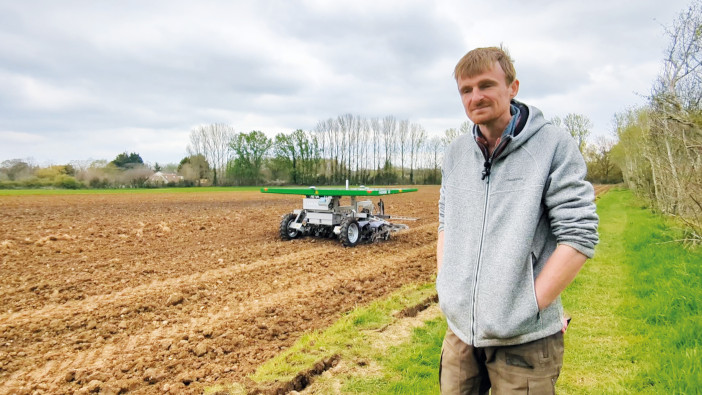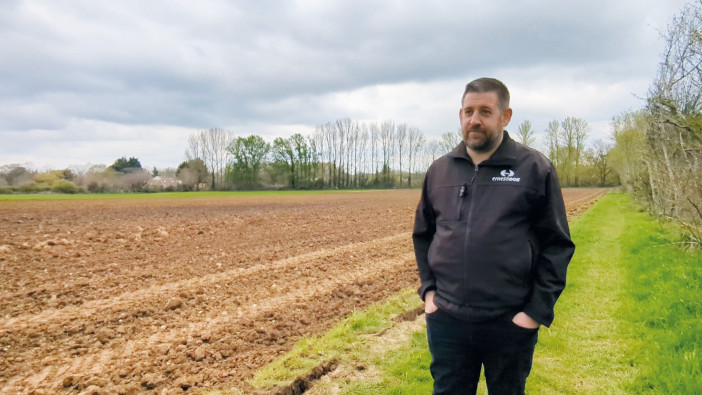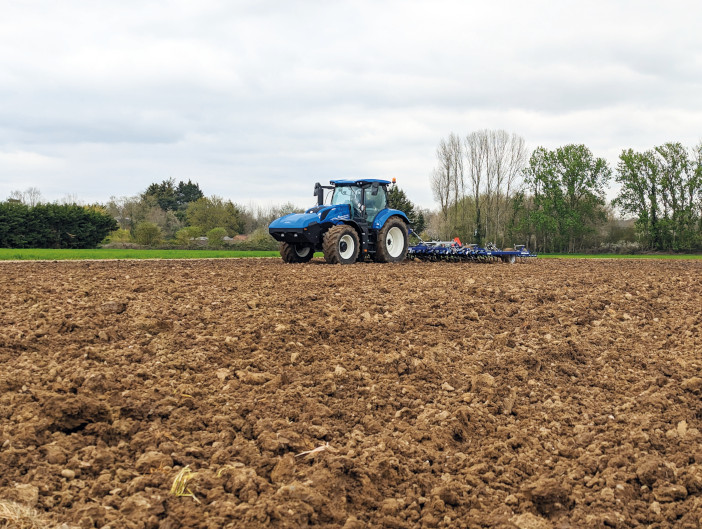As part of its practical range of agricultural courses, Writtle University College is putting the latest technologies and methodologies into practice.
In 2020, Writtle University College (WUC) became the first UK university to offer courses in regenerative agriculture. Far from a theoretical experience, WUC is using a proportion of the agricultural land surrounding the campus to put student learning into action.
It has also teamed with dealership Ernest Doe, which supplies the last technology to provide hands-on experience to the students. “WUC is committed to putting science into practice. We’re delighted to be working with Ernest Doe to offer our students access to the agritech of the future,” explained WUC farm manager, Alex Hepburn.
Mark Jolley, area sales manager at Ernest Doe, added: “We’ve worked with WUC for many years and we could see the potential benefits to both parties, primarily the opportunity to see these future technologies in a working environment, where both students and Ernest Doe customers can see the potential.”
In the middle of April, Farm Contractor headed across to the Essex campus to see the regenerative project in action. One of three fields being brought back into control of the University was being established with a fodder beet crop, with plans to integrate stewardship cover crops and agroforestry across the field and stack the enterprises.

Alex Hepburn 
Mark Jolley
“The trees will be a combination of fruit and walnuts so that we can harvest those for additional income and on either side of these, we’ll sow 3m strips of GB4 legume-rich cover and AB8 flower- and herb-rich plots as part of the Countryside Stewardship scheme,” said Mr Hepburn. “Fodder beet can obviously be a tricky crop to harvest, should the weather not be right, so to avoid unnecessary soil damage this can be grazed off if harvesting is not possible.”
Livestock is set to play a large part in the project, with the fields being fenced off over the coming months so that the University’s livestock can be integrated into the wider rotation. Mr Hepburn added that while the students are the ones primarily putting together plans for the farmland, he would like to see the integration of grass mixes into the cereal rotation to boost soil health and increase the role of livestock.

He said that the field was heavily compacted and under intense weed pressure at the start of the project, so before the establishment could go ahead, the ground was ploughed and tilled with a Dalbo Cultitrail 660 tine cultivator. The Dalbo was pulled by New Holland’s Methane Power T6.180 tractor, which fits into a circular on-farm economy using fuel that can be produced from animal waste.
Seeding was done with the FarmDroid FD20, distributed in the UK by Opico. Powered by solar panels on the top of the machine, it works autonomously with a pre-set field boundary, using a specially designed RTK guidance system and records the position of every seed in the field. This enables the machine to be converted to a blind-weeding machine once sowing is complete.
Using a newly developed tractor hitch for the FarmDroid, integrated since the machine’s UK launch last year, the machine was towed to each corner of the field, and then to either side of where the tree alleys are set to be established. Once this was completed, the FarmDroid was filled with seed and allowed to go to work.
“For the university, having access to the Methane Tractor and the FarmDroid comes with multiple benefits,” Mr Hepburn explained. “It enables us to put these projects into action, and see real-world results from the various studies going on at WUC but it also gives the students time with these new technologies, which can inform future projects and discussions about how these machines will fit into the future of farming.”
This interest is clearly there. Throughout the day, students from WUC had taken time between lectures and exam prep to come down to the site, just a few minutes from the main campus, and see the Methane Power and FarmDroid in action.
Mr Jolley noted that the FarmDroid was a step in the direction of bringing advanced technology down to a scale that would suit many farms across the UK. “This is an ideal place to demonstrate the unit. At present, the FarmDroid can handle around 20 hectares of arable land. Who knows what it will be capable of in the future, but this isn’t a prototype, it’s a working, commercially viable piece of kit in a sector that is still in its infancy.”
For more information go to www.writtle.ac.uk/

